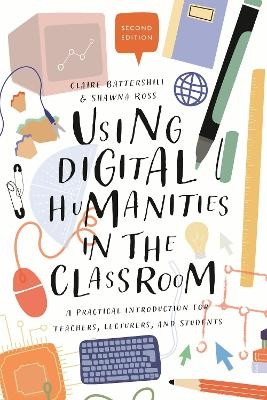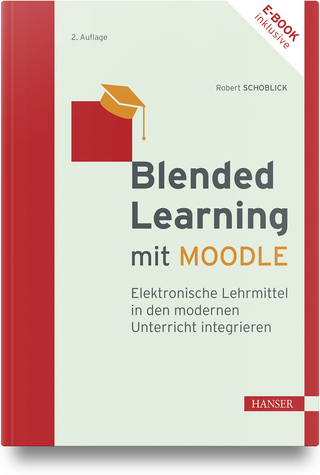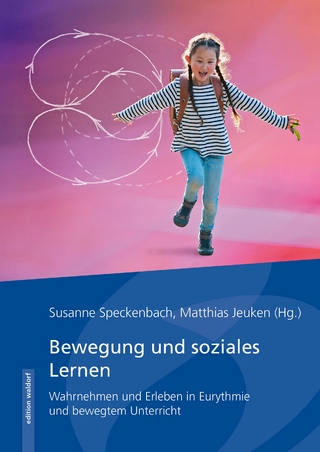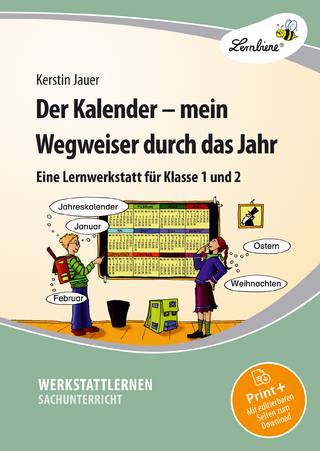
Using Digital Humanities in the Classroom
Bloomsbury Academic (Verlag)
978-1-350-18090-1 (ISBN)
- A brand-new Preface accounting for new developments in the broader field of DH pedagogy
- New chapters on 'Collaborating' and on 'Teaching in a Digital Classroom'
- New sections on collaborating with other teachers; teaching students with learning differences; explaining the benefits of digital pedagogy to your students; and advising graduate students about the technologies they need to master
- New 'advanced activities' and ‘advanced assignment’ sections (including bots, vlogging, crowd-sourcing, digital storytelling, web scraping, critical making, automatic text generation, and digital media art)
- Expanded chapter bibliographies and over two dozen tables offering practical advice on choosing software programs
Accompanied by a streamlined companion website, which has been entirely redesigned to answer commonly asked questions quickly and clearly, this is essential reading for anyone looking to incorporate digital tools and resources into their daily teaching.
Claire Battershill is an Assistant Professor, cross-appointed in the Faculty of Information and the Department of English, at the University of Toronto, Canada. Shawna Ross is Associate Professor of English at Texas A&M University, USA.
Using Digital Humanities in the Classroom, 2nd edition
Proposed Table of Contents
Preface
i. Justification for second edition
ii. New developments in the digital humanities
Iii. Critical digital humanities
Introduction
i. Who is this book for?
ii. What are the digital humanities?
iii. Key concepts
iv. How to use this book and Web Companion
v. The Web Companion
vi. Conclusion
1. Finding, Evaluating and Creating Digital Resources
i. Why use digital texts (and other assets)?
ii. Finding and evaluating digital resources
iii. Creating digital resources for your students
iv. Creating digital resources with your students
v. A short guide to citation and copyright
vi. Conclusion
vii. Further reading
2. Ensuring Accessibility
i. Universal design
ii. Facilitating lectures
iii. Promoting universal interactivity
iv. Providing accessible resources
v. Privacy, safety, and account management
vi. Learning differences
vii. Adapting policies for individual students and student bodies
viii. Conclusion
ix. Further reading
3. Designing Syllabi
i. Course websites
ii. A note on domains and web hosting
iii. Online syllabi
iv. Other digital resources for course websites
v. Should you teach an introduction to DH course?
vi. An alternative approach: Choosing your amount of DH
vii. Anatomy of a syllabus I: Course information and learning objectives
viii. Anatomy of a syllabus II: Course policies
ix. Conclusion
x. Further reading
4. Designing Classroom Activities
i. Activities as exploration
ii. Activity design: Balancing integration and flexibility
iii. Ten-minute exercises
iv. Half-hour exercises
v. Whole-class exercises
vi. Weeklong exercises
vii. Writing effective prompts
viii. Advanced activities
ix. Conclusion
x. Further reading
5. Managing Classroom Activities
i. Working with existing or free resources
ii. Many ways to secure equipment
iii. Troubleshooting
iv. In case of total failure
v. Conclusion
vi. Further reading
6. Creating Digital Assignments
i. General principles for creating digital assignments
ii. Common types of digital assignments
iii. Writing effective assignment sheets
iv. Advanced assignments
v. Conclusion
vi. Further reading
7. Evaluating Student Work
i. The importance of explicit assessment criteria
ii. Anatomy of a rubric
iii. Competencies: A language for indicating success
iv. Involving students in evaluation processes
v. Thinking beyond the rubric
vi. Coping with failure during assessment periods
vii. Conclusion
viii. Further reading
8. Teaching Graduate Students
i. The role of technology in twenty-first-century graduate education
ii. Graduate students versus undergraduate students
iii. Incorporating DH into graduate course work
iv. External opportunities
v. Professionalization and the job market
vi. A note on alt-ac careers
vii. Conclusion
viii. Further reading
10. Building Internal and External Support Communities
i. A note on the variety of support systems
ii. Internal Support
iii. Social media
iv. Grant funding
v. Conclusion
vi. Further reading
11. DH Beyond the Classroom
i. Theories of collaboration
ii. Impact, outreach, and the public humanities
iii. Libraries
iv. Museums and galleries
v. Local governments
vi. Non-profits and other NGOs
vii. Participatory events
viii. Conclusion
viii. Further reading
12. Connecting to Your Research
i. Counting more than once
ii. Incorporating digital methods in your research
iii. Producing research on digital pedagogy
iv. Broadening the scope of your research
v. Collaborating with students
vi. Conclusion
vii. Further reading
Concluding Thoughts: Crafting Your DH Pedagogical Philosophy
Index
| Erscheinungsdatum | 06.04.2022 |
|---|---|
| Verlagsort | London |
| Sprache | englisch |
| Maße | 156 x 234 mm |
| Themenwelt | Schulbuch / Wörterbuch ► Unterrichtsvorbereitung ► Unterrichts-Handreichungen |
| Geisteswissenschaften ► Geschichte ► Geschichtstheorie / Historik | |
| Geisteswissenschaften ► Sprach- / Literaturwissenschaft ► Anglistik / Amerikanistik | |
| Geisteswissenschaften ► Sprach- / Literaturwissenschaft ► Literaturwissenschaft | |
| Sozialwissenschaften ► Pädagogik ► Allgemeines / Lexika | |
| Sozialwissenschaften ► Pädagogik ► Bildungstheorie | |
| ISBN-10 | 1-350-18090-4 / 1350180904 |
| ISBN-13 | 978-1-350-18090-1 / 9781350180901 |
| Zustand | Neuware |
| Informationen gemäß Produktsicherheitsverordnung (GPSR) | |
| Haben Sie eine Frage zum Produkt? |
aus dem Bereich


